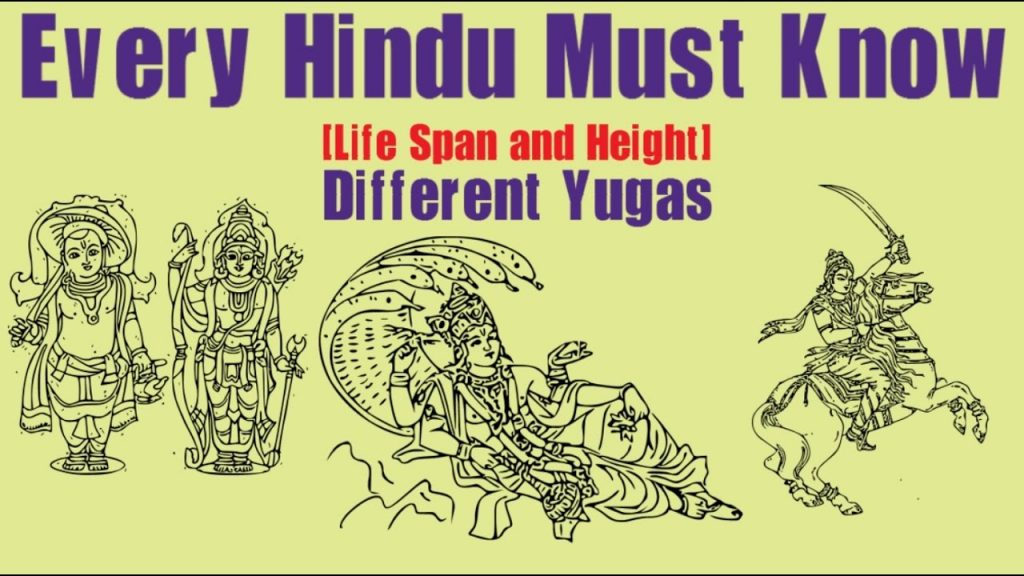The Bible refers to a Great Flood and the destruction of most life, except that which was saved by Noah. The Hindus have their own version of Noah, called Vaivasvata Manu. As with Noah, all living beings on Earth are said to descend from the creatures he rescued from a Great Flood. The Hopi and the Maya also believe that the last epoch ended in a Great Deluge.
Whereas the Bible and the Native Americans see these ages in a linear progression, the Vedic traditions see this last cycle of destruction as part of a vast cyclical continuum, which repeats infinitely.
In the Sanskrit traditions, there are 4 ages or Yugas on an endless loop: 1) The Satya Yuga (Golden Age); 2) Treta Yuga (Silver Age); 3) Dwapara Yuga (Bronze Age) and 4) The Kali Yuga (Iron Age).
Little-known is that the ancient Greeks and Romans had similar mythologies about metallic ages. Hesiod, The ancient Greek poet who lived at the end of the 8th century BC wrote the epic poem Works and Days, in which he makes the first recorded reference to the five successive “ages” or “races” of man in Western history. His account does not refer to the ages as being cyclical. It describes a mostly linear descent from mankind’s original exalted, heavenly state, into successively degraded and debased versions. Here is a very brief summary of Hesiod’s epic poem:
The Golden Age was before the time of Zeus. His father
Cronus reigned over the Golden Age, when men lived among the
gods and there were no rules because everybody did the right
thing. It was always Spring. Peace and harmony prevailed and
humans did not have to work to feed themselves; the Earth
provided food in abundance. They lived to a very old age but with
a youthful appearance and eventually they died peacefully, as if
falling asleep. Their spirits were said to live on as “guardians” of
the mortals.
The Silver Age. Zeus overthrew his father Cronus and ruled over
the Silver Age and subsequent ages. Zeus created the Silver race
of man to be inferior in appearance and wisdom to the last. He
divided the year into four seasons. Man had to grow his food and
seek shelter, but still, their childhoods were long and they could
play for a hundred years before growing up. They lived only a
short time as grown adults and spent most of that time in strife
with one another, due to their childish foolishness. Zeus destroyed
this race for refusing to worship the gods. Nonetheless, after
death, the Silver race became the “blessed spirits” of the
underworld.
The Bronze Age. Zeus created the “first recognizably human”
Bronze race from the hardwood of ash trees. War and violence
was the purpose and passion of the Bronze race. An odd detail
about this race was that they did “not eat bread” (Hesiod didn’t
say why). Their weapons, tools and even their homes were forged
of bronze. This race of men was destroyed by Zeus with a Great
Flood.
Hesiod says that the nameless spirits of this destroyed Bronze
race dwell in the “dank house of Hades.” A tiny handful of virtuous
people survived, as recounted in the tale of Deucalion, the
ancient Greek Noah, in which he and his wife Pyrrha survived the
flood by following the instructions of his father, in a story that is
basically the same as that of the Biblical Noah and of his
Sumerian counterpart, Utnapishtim in the Epic of Gilgamesh.
The Heroic Age. This is the only age that improves upon the era
that preceded it and it’s the only age that does not correspond
with any metal. The demigods of this Age fought at Thebes and
Troy. When the Heroes died, they went to the Elysian Fields, an
area of the Underworld that was the final resting place of the
virtuous. The Heroic Age frankly seems out of place in this scheme
and it’s apparently a tribute to Homer’s epic poem, The Odyssey.
The Iron Age. At the time of Hesiod’s writing in the 700s BCE,
the world was already in the throes of the Iron Age. Earthly
existence was one of toil and misery. All manner of evils came
into being during this age. Piety and other virtues disappeared
and most of the gods who were still left on this Earth abandoned
it. It was said that Zeus would destroy this (our) race some day.
My favorite detail about the degradation of this age is that
“babies will be born with gray hair” (!)
During the Hindu Golden Age (Satya Yuga), people are said to be over 30 feet tall, they’re totally virtuous and wise and their lifespans are of 100,000 years.
With each succeeding age, both the people and the Earthly environment become increasingly corrupt and less beautiful, their lifespans and statures shortened.
My favorite prophecies about what life would be like, as the Iron Age (Kali Yuga) inexorably plunges humanity into unimaginable depths of debasement were made by the Hindu-born Buddhist holy man from the 8th century, Padma Sambhava aka Lopon Rinpoche aka the “Second Buddha.” He noted trivial things that would indicate that humanity had definitely reached new lows: “People will eat standing up, and even running…guides to enlightenment will be sold on street corners.”
I think that’s pretty good evidence that we’re fully in the Kali Yuga! I wonder what Sambhava would have to say about the five 24-hour drive-thru burger joints within a two-block radius of where I used to live in Los Angeles!
According to the Hindu Holy books, the Puranas, the Kali Yuga will culminate in about 427,000 years, when we can expect the following:
…increasing desertification and extremes of heat and cold.
Gradually, plant life will become extinct, and animals will also die
off, so that in the end of the Kali Yuga, humans will be reduced to
cannibalism.
…finally, at the end of Kali Yuga, an avatar of Vishnu called Kalki
will appear to destroy whoever is left. Then a new Satya Yuga, or
Golden Age of spirituality will begin again.
This short video gives a brief description of each Yuga, the corresponding lifespans and statures of humans during each epoch, according to ancient Sanskrit texts.

